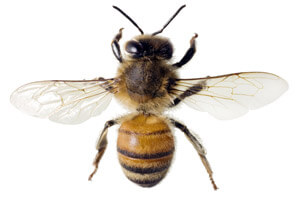
The 2014 beekeeping season will long be remembered for the need for crisis intervention in much of Central Pennsylvania. Winter losses in the region were catastrophic. The season started on a bad note with a spring that came late, and to add insult to injury, fall came early. There were too many days of warm weather after the flowers had long died off before the temperatures settled into the thirties and the bees clustered. As the colonies remained active, food stores declined. By mid-December, many of the hives were in trouble.
In all my years of keeping bees this was a curve ball I never had to swing at. I knew I had to feed the bees for the next three months or suffer heavy losses. Fondant (see sidebar article) was my choice as a food source since it could be placed above the clusters and the bees would have easy access to it, and unlike syrup, it would not add humidity to the hive. Most importantly, at temperatures below freezing the bags could be placed quickly, leaving the hive open for only a short time. Fondant could also be easily packed into a backpack and carried into yards that were snowed in.
One big advantage of fondant is the ability to mold it. It is easily adapted to feeding nucs, shallow hive bodies, or Warre hives. It can even be inserted in place of a frame. The major down side of using fondant is the bees tend to draw out comb in the empty spaces around it. This can be minimized by draping grain sacks over the fondant, and inspecting at two or three week intervals. Placing the fondant in oversized zip loc bags that cover most of the tops of the frames will also prevent the bees from drawing out comb. Another drawback of fondant is that once it dries, the bees do not have much use for it. Eventually it can be dissolved in water, but that is counter-productive, so keeping it from drying is important. Placing it closeable plastic bags accomplishes this.
All that is needed to prepare the fondant is a flat surface (a couple of deeps with a telescoping cover work quite well), a bag of pollen substitute like Dadant’s AP23 or Mann Lake’s Ultra Bee Dry, plastic zip loc bags, and a machete. The machete will easily slice through a block of fondant at room temperature. Use pollen substitute where you are placing the machete blade. Keep a steady downward pressure on the machete and withdraw it and add more pollen substitute if the blade starts to stick. Once the slab is free of the block, cut it in half, powder both sides and the ends and slide it into a large zip lock bag. The coating of pollen substitute prevents it from sticking to the sides of the bag. Zip the bag up, but do not seal it completely. The fondant is very malleable and you can flatten it out to fill the bag. Once that is done, remove the excess air and seal the bag by completely closing the zip lock. This will keep it from drying out and the fondant will store for months.
Now the bags are ready for use. It is necessary to …


